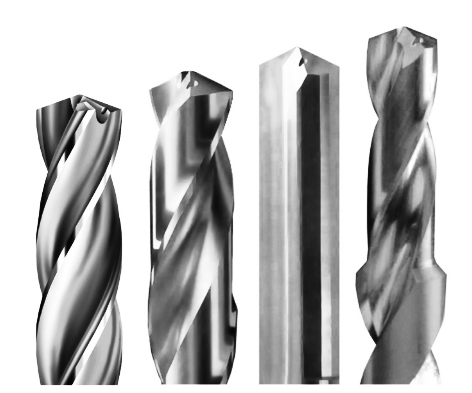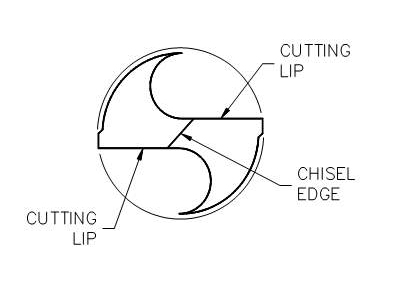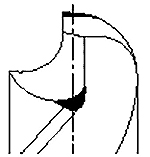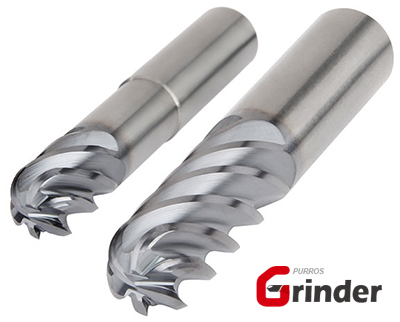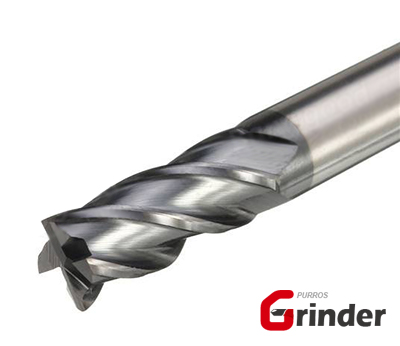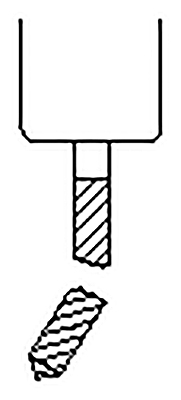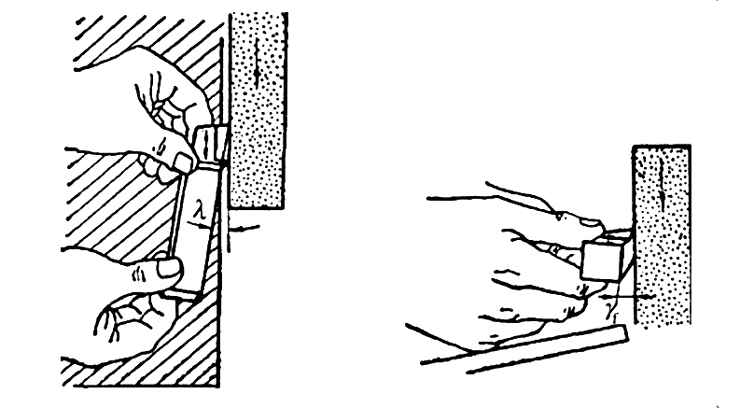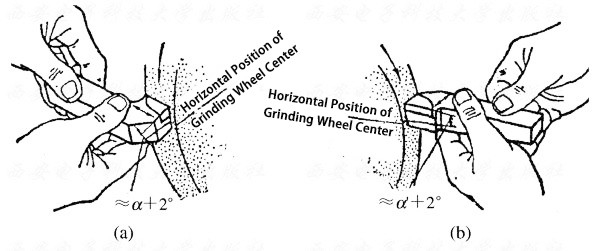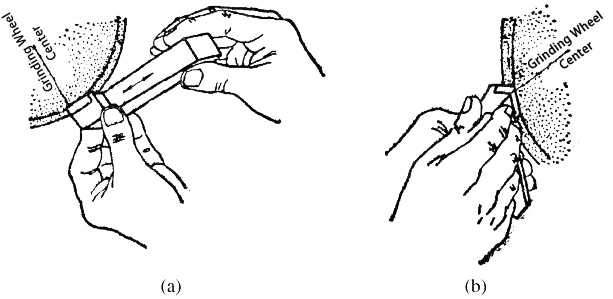The drill bit is the best cutting tool for grinding.
The design should consider the need for grinding.
For preprocessing or general hole accuracy, degree of the drill bit grinding is worn at most 20 times. For high precision drilling bit, it can be sharpened 5 times.
Category Archives: Technology
Technology page is shared the experience of technical talent in field of drill bit grinder, help you to resolve the technical difficulties, and makes you into a specialist of drill bit re-grinder.
How to solve the large wear and chipping, crushing of the chisel edge?
- Cause: Feed rate is too large
Solution: Decrease feed rate, because too large feeding that will increase the cutting resistance. - Cause: Point dimensions are not suitable
Solution: Select correct point dimensions, for example: the point angle is small, but the rigidity of cutting material is big. - Cause: Tool materials is not suitable
Solution: Choose a suitable tool material that means choosing a bigger rigidity of material for making cutter. - Cause: Relief angle is too small
Solution: Increase relief angle, because too small relief angle will Increase the wear and tear of flank face.
Abnormal Wear on Corner Part of Twist Drill, and Solutions
In the process of metal cutting, twist drill cuts the metal layer on the workpiece, at the same time, the workpiece and chips acts on the twist drill, causing the twist drill wear off. Normal wear off is inevitable, but abnormal wear is not acceptable. Such as abnormal wear on corner part of twist drill, Now, PURROS Machinery will enumerate these questions, and how to solve them.
Chipping of Corner Edge of Twist Drill and Solutions
In production, chipping of corner edge twist drill is happened many times. Because of drill material, loose jig, uneven hardness of workpiece material, unsuitable feed speed, unsuitable coolant, relief angle too small, or exhausted bit, etc.
Situation 1: 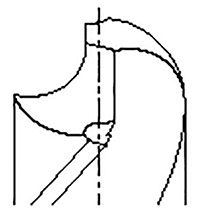 Continue reading
Continue reading
Drill Breakage and Solutions
During drilling operation, problems with drills broken are often encountered. Now, PURROS Machinery lists the solutions of drill breakage as below:
The machining accuracies of the holes can be achieved by different tools
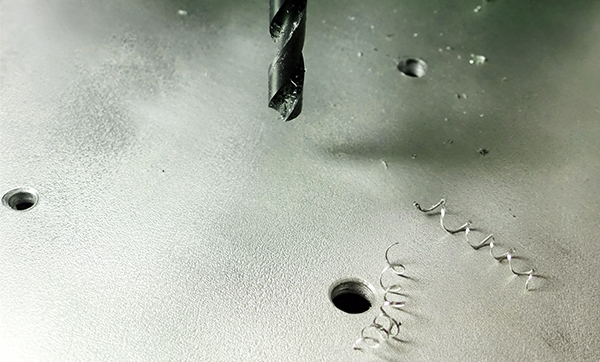
| Type of Cutting Tools | H12 | H11 | H10 | H9 | H8 | H7 | H6 | H5 |
| HHS | x | x | ||||||
| HHSEnlarging Drill | x | x | ||||||
| Spot Weld Carbide Drill | x | x | ||||||
| Solid Carbide Drill | x | x | x | |||||
| Solid Carbide Straight Flute Drill | x | x | ||||||
| Solid Carbide 3-flute Drill | x | x | ||||||
| Gun Drill | x | x | x | |||||
| Reamer | x | x | x | |||||
| PCD Enlarging Drill | x | x | ||||||
| PCD Reamer | x | x |
(Made by: Purros Machinery Co., Ltd.)
Fine Sharpening Lathe Tool
Fine Sharpening Lathe Tool
- (1)Fine Sharpening Flute: In order to make the shape of flute more precision, and surface roughness is finer than before, so flute should be fine sharpened after rough sharpening. The sharpening method is the same as rough sharpening.
- (2)Sharpening Negative Chamfering: Negative Chamfering is commonly sharpened by end of grinding wheel, the granularity between 100# to 200#. The sharpening method as follow the figure :
The Standard Sharpening Method of Lathe Tools
The Steps of Sharpening Lathe Tool
Step 1: Sharpening the major flank face, at the same time, sharpening lip relief angle;
Step 2: Sharpening the minor flank face, at the same time, sharpening end relief angle;
Step 3: Sharpening the fake face, at the same time, sharpening point angle;
Step 4: Sharpening remained faces and the tip;
The Methods of Sharpening Lathe Tool
Now, PURROS Machinery takes the rough grinding carbide alloy cutter as an example, to illustrate the method of cutting tool sharpening.
1. Rough sharpening the major flank face and the minor flank face, at the same time, major angle of declination, major lip relief angle, minor angle of declination, and minor lip relief angle also has sharpened. The angle of major lip relief angle and minor lip relief angle by rough sharpening should be bigger than requested. View Figure:
(a) Lip Relief Angle, behind the major flank face of shank
(b) Lip Relief Angle, behind the minor flank face of shank
2. Rough Sharpening Rake Face: Rake Face and Flute are sharpened at the same time, before flute is sharpened, used the end face of grinding wheel to rough sharpen, to obtain the necessary angle and surface roughness.
3. Sharpening Flute: Flute can be sharpened by edge of flat grinding wheel, as Figure shows the sharpening method. Generally, the position of rough sharpening should be began half of between flute and drill bit tip.
(a) Sharpening Down (b) Sharpening Up
The Notes of Lathe Sharpening by hand.
- Please note that operator should stand on the side of the lathe tool grinder, to prevent hurtful from debris if the grinding wheel is broken.
- Keeping enough distance to hold the shank of lathe tool between hands, to tighten the waist with two elbows to reduce the shaking of the lathe tool sharpening.
- During sharpening lathe tool, please place the lathe tool on the horizontal center of the grinding wheel, and the tip of the lathe tool is slightly upward about 3°-8°, when the lathe tool touches the grinding wheel that the lathe tool should be moved around horizontally.
- During sharpening major flank face, the lathe tool shank should be shifted an angle to the left as major cutting edge angle; during sharpening minor flank face, the lathe tool shank should be shifted an angle to the right as minor cutting edge angle.
- During sharpening arc of the tip, generally, holding the tip of lathe tool with left hand as a fulcrum, and at the same time, moving the shank of lathe tool with right hand.

